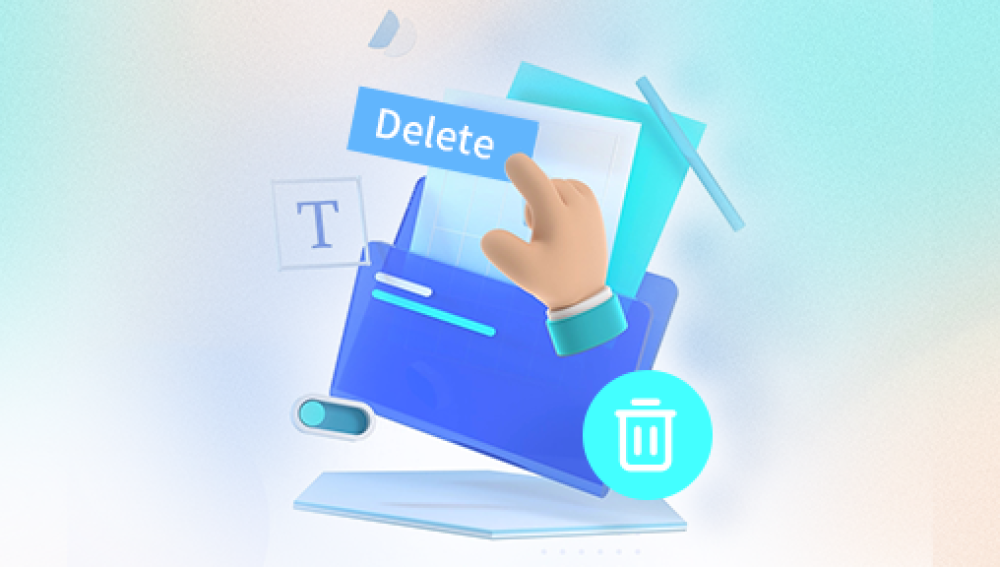Windows File Recovery is a powerful tool designed to help users recover lost or deleted files, including videos. However, after attempting to recover videos, you may encounter issues where the files won't open or play.
Windows File Recovery is a utility provided by Microsoft that allows users to recover lost files from various storage devices, such as hard drives, USB drives, and SD cards. It operates using a command-line interface, enabling users to run recovery commands based on specific parameters.
Common Reasons for File Issues
After recovery, there are several reasons why videos may fail to open:
Corrupted Files: The recovery process might not restore the files fully, leading to corruption.
Incompatible Formats: The recovered videos may be in a format that your media player does not support.
Incomplete Recovery: Sometimes, the recovery process does not retrieve all necessary components of a video file.
Storage Device Issues: If the source device had problems, the recovered files might reflect those issues.

Steps to Troubleshoot Videos That Won’t Open
1. Verify File Formats
Steps:
Check the file extension of the recovered videos (e.g., .mp4. .avi, .mov).
Ensure that your media player supports these formats.
Tip: Consider using versatile media players like VLC, which supports a wide range of video formats.
2. Use Different Media Players
If your default media player cannot open the files, try the following:
Steps:
Download and install a different media player such as VLC, PotPlayer, or KMPlayer.
Open the recovered video files with the new player.
Reason: Some players have better compatibility with corrupted or non-standard files.
3. Check File Integrity
To determine if the files are indeed corrupted, you can run integrity checks:
Steps:
Right-click on the video file and select 'Properties'.
Navigate to the 'Details' tab to check for file size and duration.
Compare this information with the original file details if available.
Note: If the file size is significantly smaller than expected, it may be corrupted.
4. Attempt to Repair the Videos
If the videos are corrupted, you can attempt to repair them using specialized software:
Recommended Software:
Stellar Repair for Video: This tool can fix corrupted video files in various formats.
VLC Media Player: It includes a built-in feature to repair damaged AVI files.
Steps (Using VLC):
Open VLC and go to 'Media' > 'Convert/Save'.
Add the corrupted video file and click 'Convert/Save'.
Select 'Convert', choose the output format, and click 'Start'.
5. Restore from Backup
If you had backups before attempting recovery, consider restoring the videos from those backups:
Steps:
Locate your backup files (from an external hard drive, cloud storage, etc.).
Copy the videos to your original location.
Note: Always ensure that your backups are up-to-date to avoid future loss.
6. Re-run Windows File Recovery
If you suspect that the initial recovery was incomplete, you might want to re-run Windows File Recovery with different settings:
Steps:
Open Command Prompt as an administrator.
Use a different recovery mode (e.g., 'Regular', 'Segment', or 'Signature') based on your needs.
Example Command:
bash
winfr E: D: /n *.mp4
Replace E: with the source drive and D: with the target drive.
7. Use Alternative Recovery Software
If Windows File Recovery didn't yield satisfactory results, consider using third-party recovery software:
Recommended Software:
Panda Assistant is an innovative data recovery software designed to help users effortlessly recover lost, deleted, or inaccessible files from various storage devices, including SD cards, USB drives, and hard drives. With its user-friendly interface, Panda Assistant simplifies the recovery process for both novice and experienced users. The software employs advanced algorithms to scan devices thoroughly, allowing users to retrieve files in multiple formats, such as documents, photos, videos, and more.
Moreover, Panda Assistant emphasizes data security and integrity, ensuring that recovered files are restored without any alteration. Whether you accidentally deleted important documents or faced data loss due to device failure, Panda Assistant is the reliable solution to help you recover your valuable information swiftly and efficiently. With Panda Assistant, data loss is no longer a permanent setback.
Steps:
Download and install the chosen recovery software.
Run a scan on the affected drive.
Preview and recover the video files.
8. Explore Command-Line Options
Sometimes, using advanced command-line tools can yield better recovery results:
Steps:
Open Command Prompt as an administrator.
Use commands like chkdsk to check for disk errors.
bash
chkdsk D: /f
Replace D: with the relevant drive letter.
9. Check for Drive Errors
Issues with the storage device can lead to problems with file accessibility:
Steps:
Right-click on the drive in File Explorer.
Select 'Properties', then go to the 'Tools' tab.
Click on 'Check' under the Error-checking section.
10. Seek Professional Data Recovery Services
If the videos are critical and you cannot recover them yourself, consider professional data recovery services:
Steps:
Research and select a reputable data recovery service.
Contact them to discuss your issue and receive a quote.
Caution: Ensure that the service guarantees data privacy and confidentiality.
Preventive Measures to Avoid Future Loss
1. Regular Backups
Implement a regular backup strategy:
Use external hard drives, cloud storage, or network-attached storage (NAS) solutions.
Schedule automatic backups to ensure your files are regularly saved.
2. Use Reliable Recovery Tools
Before recovery, research and select reliable recovery tools that have good reviews and proven success rates.
3. Be Cautious with Deletions
When deleting files, double-check to avoid accidental loss:
Use the recycle bin effectively and avoid permanent deletions when possible.
4. Monitor Storage Devices
Keep an eye on the health of your storage devices:
Use tools to monitor the status of hard drives or SSDs.
Replace aging devices to prevent unexpected failures.
Encountering issues with videos not opening after using Windows File Recovery can be frustrating, but with the right troubleshooting steps, you can often recover your files. By understanding the recovery process, verifying file formats, using alternative players, and taking preventive measures, you can protect your valuable video content. Should you find yourself unable to recover the files on your own, consider professional services for the best chance of retrieval.




